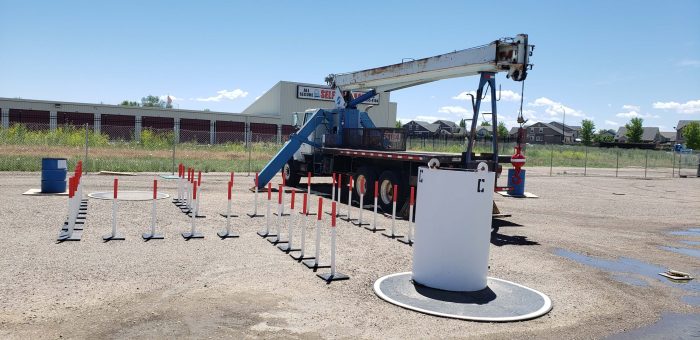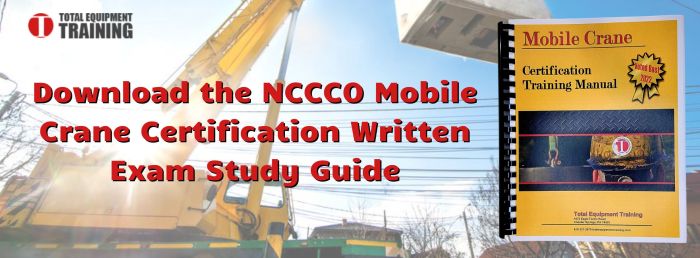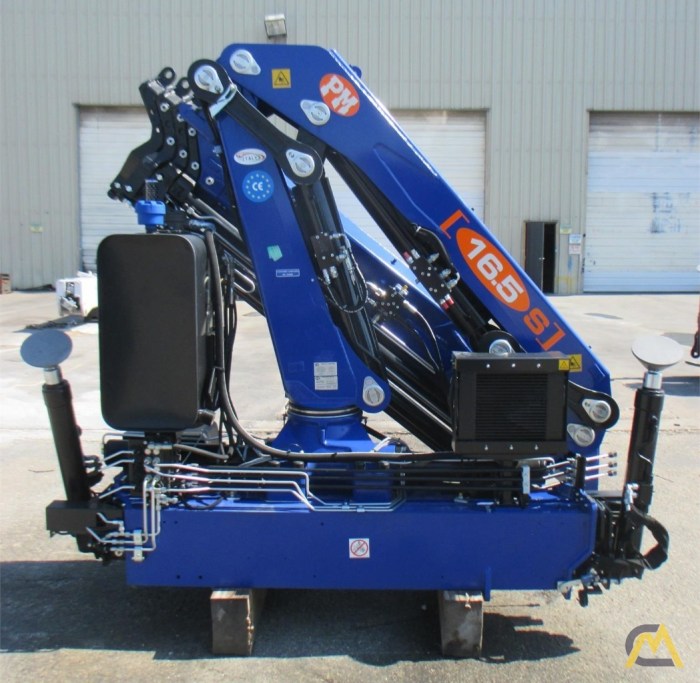Embark on a journey of knowledge with our articulating boom crane practice test guide. Delve into the intricacies of this versatile machinery, gaining proficiency in its operation and unlocking the potential for safe and efficient lifting tasks.
As you navigate through this comprehensive guide, you will uncover the diverse types of articulating boom cranes, their unique capabilities, and practical applications. Explore the essential components that form the backbone of these cranes, understanding their functions and how they orchestrate the crane’s seamless operation.
Types of Articulating Boom Cranes: Articulating Boom Crane Practice Test

Articulating boom cranes are a versatile type of crane that can be used for a wide range of applications. They are characterized by their ability to extend and retract their booms, as well as to articulate them in multiple directions.
This gives them a high degree of maneuverability, making them ideal for use in confined spaces or for reaching over obstacles.There are three main types of articulating boom cranes:
- Telescopic articulating boom cranes
- Knuckle boom cranes
- Foldable boom cranes
Telescopic Articulating Boom Cranes, Articulating boom crane practice test
Telescopic articulating boom cranes are the most common type of articulating boom crane. They feature a telescoping boom that can be extended and retracted, as well as a knuckle that allows the boom to be articulated in multiple directions. This gives them a high degree of reach and maneuverability, making them ideal for use in a wide range of applications.
Knuckle Boom Cranes
Knuckle boom cranes are similar to telescopic articulating boom cranes, but they have a shorter boom that is not telescoping. This makes them more compact and easier to maneuver in confined spaces. Knuckle boom cranes are often used for lifting and placing materials in tight spaces, such as inside buildings or on construction sites.
Foldable Boom Cranes
Foldable boom cranes have a boom that can be folded down for easy transport and storage. This makes them ideal for use in applications where space is limited, such as on job sites or in warehouses. Foldable boom cranes are often used for lifting and placing materials, as well as for maintenance and repair work.
Articulating Boom Crane Components
Articulating boom cranes are versatile pieces of equipment used in various industries. They consist of several key components that work together to enable the crane’s operation. Understanding these components is crucial for safe and efficient crane operation.
Boom
The boom is the primary structural element of an articulating boom crane. It is a telescopic structure that can be extended or retracted to reach different heights and positions. The boom provides the crane with its reach and lifting capacity.
Jib
The jib is an optional attachment that can be mounted on the end of the boom. It extends the crane’s reach and allows it to lift loads over obstacles or into confined spaces. The jib can be articulated independently of the boom, providing additional flexibility and maneuverability.
Outriggers
Outriggers are stabilizing supports that extend from the base of the crane. They provide stability and prevent the crane from tipping over when lifting heavy loads. Outriggers are typically hydraulically operated and can be adjusted to suit the ground conditions and the weight of the load being lifted.
Operating Procedures for Articulating Boom Cranes

Operating articulating boom cranes requires adherence to strict safety procedures and best practices to ensure the safety of operators, ground personnel, and the surrounding environment. Proper setup, load handling, and maintenance are crucial for safe and efficient crane operation.
Pre-Operation Inspection and Setup
Before operating an articulating boom crane, a thorough pre-operation inspection must be conducted to identify any potential hazards or malfunctions. This inspection includes checking the crane’s structural components, hydraulic systems, electrical systems, and safety devices. The crane should be set up on a stable and level surface, and outriggers should be extended and properly positioned to provide adequate stability.
Load Handling
Load handling procedures must be followed carefully to prevent accidents and damage to the crane or load. The crane’s load chart should be consulted to determine the maximum load capacity for different boom configurations and operating conditions. Loads should be properly secured to the crane’s hook or lifting device, and the load’s weight and dimensions should be verified before lifting.
Operating the Crane
- Boom Extension and Retraction:Extend the boom slowly and smoothly, avoiding sudden movements. Retract the boom in the reverse order of extension.
- Load Lifting:Lift the load vertically, keeping it clear of obstacles. Avoid swinging or jerking the load.
- Boom Swing:Swing the boom smoothly, ensuring that the load remains stable and within the crane’s operating radius.
- Lowering the Load:Lower the load slowly and carefully, maintaining control throughout the movement.
Maintenance
Regular maintenance is essential to ensure the safe and reliable operation of an articulating boom crane. Maintenance tasks include regular inspections, lubrication, and replacement of worn or damaged components. A maintenance schedule should be established and followed to prevent breakdowns and ensure optimal crane performance.
Common Challenges and Troubleshooting for Articulating Boom Cranes
Operating articulating boom cranes presents unique challenges that require specialized knowledge and troubleshooting skills. This section identifies common challenges and provides effective solutions to ensure safe and efficient crane operation.
Regular inspections and maintenance are crucial for preventing potential problems. Thoroughly inspecting the crane before each use and conducting regular maintenance checks help identify potential issues early on, allowing for timely repairs and preventing costly breakdowns.
Stability Issues
Stability is a critical concern when operating articulating boom cranes. Factors such as uneven ground, wind conditions, and improper load distribution can affect the crane’s stability. To address stability issues:
- Ensure the crane is positioned on a stable and level surface.
- Extend the outriggers fully and ensure they are firmly planted on the ground.
- Monitor wind conditions and avoid operating the crane in high winds.
li>Distribute the load evenly across the crane’s platform.
Load Balancing
Proper load balancing is essential for safe crane operation. Incorrect load balancing can lead to instability and potential accidents. To ensure proper load balancing:
- Calculate the weight of the load and ensure it does not exceed the crane’s capacity.
- Use a load chart to determine the appropriate boom extension and load radius.
- Attach the load securely to the crane’s hook.
- Monitor the load’s movement and make adjustments as necessary.
Weather Conditions
Weather conditions can significantly impact the operation of articulating boom cranes. Rain, snow, and wind can affect the crane’s stability and visibility. To address weather-related challenges:
- Avoid operating the crane in extreme weather conditions.
- If operating in rain or snow, ensure the crane is equipped with proper lighting and visibility aids.
- Be aware of wind conditions and take precautions to prevent the crane from tipping over.
- Suspend operations if weather conditions become too severe.
Regulations and Standards for Articulating Boom Cranes

The operation of articulating boom cranes is governed by a comprehensive set of regulations and standards to ensure safety and compliance. These regulations are established by various government agencies and industry organizations to provide a framework for the safe operation, inspection, and maintenance of cranes.
Operator Certification
Operators of articulating boom cranes must be certified to demonstrate their competence in operating the equipment safely and efficiently. Certification typically involves completing a training program and passing an examination that covers the principles of crane operation, safety procedures, and emergency response protocols.
Crane Inspection
Regular inspections are essential to ensure the safe operation of articulating boom cranes. These inspections should be conducted by qualified inspectors who are familiar with the specific crane model and its components. Inspections typically involve a thorough examination of the crane’s structure, hydraulic system, electrical components, and safety devices.
Load Testing
Load testing is a critical aspect of crane operation to verify the crane’s capacity and stability. Load tests involve lifting a known weight at various boom lengths and configurations to ensure that the crane can safely handle the intended loads.
Industry Best Practices
In addition to regulations and standards, industry best practices and recommended guidelines provide additional guidance for the safe operation of articulating boom cranes. These guidelines are developed by industry experts and organizations to promote safe work practices and minimize the risk of accidents.
FAQ
What is the primary purpose of an articulating boom crane?
Articulating boom cranes excel in lifting and positioning loads in confined spaces or over obstacles, making them ideal for construction, maintenance, and industrial applications.
What are the key safety considerations when operating an articulating boom crane?
Prioritize stability by ensuring proper setup and outrigger deployment. Inspect the crane regularly, adhere to load limits, and maintain a safe working radius to prevent accidents.
How can I prepare for an articulating boom crane certification exam?
Familiarize yourself with industry regulations, study crane components and operation procedures, and practice using our comprehensive practice test guide to enhance your knowledge and confidence.